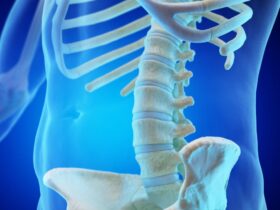Traction alopecia, a form of hair loss, occurs when excessive tension is repeatedly applied to the hair follicles. This condition is not limited to any specific gender, age group, or ethnicity. Understanding its causes, recognising its symptoms, and exploring Traction alopecia treatment options are crucial steps in managing traction alopecia effectively. So, read on to learn more about the condition.
Causes of Traction Alopecia
It often arises from certain hairstyles that exert a continuous pulling force on the hair follicles. Tight braids, ponytails, weaves, and extensions are common culprits. Additionally, frequent use of hair accessories like hairpins, clips, and bands can contribute to this condition. Prolonged wearing of helmets or headgear that fits tightly can also lead to this condition.
Symptoms of Traction Alopecia
The symptoms of this condition manifest gradually over time. Initially, individuals may notice thinning or bald patches along the head’s hairline, temples, or crown. As the condition progresses, these areas may become more pronounced, and hair may become brittle and prone to breakage. It is essential to recognise these early signs to seek appropriate treatment promptly.
Exploring the Importance of Traction Alopecia Treatment
- Prevention of Further Hair Loss: Traction alopecia, if left untreated, can lead to progressive loss in affected areas. By addressing the condition early and seeking appropriate treatment, individuals can halt the progression and prevent further damage to their follicles. This early intervention is crucial in preserving the existing strands and minimising the extent of loss.
- Restoration of Hair Growth: Treatment for this condition aims to stimulate regrowth in areas where hair loss has occurred. This restoration not only improves individuals’ physical appearance but also boosts their confidence and self-esteem. Reclaiming lost strands can enhance individuals’ comfort and satisfaction with their appearance, contributing to a comprehensive enhancement in their quality of life.
- Prevention of Complications: Untreated traction alopecia can lead to various complications, including folliculitis (inflammation of the follicles), scarring, and permanent baldness. Early treatment seeking can aid in averting these complications and preserving scalp health holistically. By stopping the root cause, individuals can mitigate the likelihood of encountering additional issues and uphold the enduring health of their scalp.
- Improvement of Scalp Health: Many treatment options for this condition focus on improving scalp health by increasing blood circulation, nourishing the follicles, and promoting a healthy growth cycle. A healthy scalp is essential for maintaining strong and vibrant strands. By improving scalp health, individuals can create an optimal environment for growth and reduce the risk of future loss.
- Enhancement of Self-Image and Confidence: Regardless of its origin, loss can profoundly affect one’s self-esteem and confidence. Engaging in such treatment and reclaiming lost strands can instil a sense of positivity regarding one’s appearance and elevate one’s overall well-being. Restoring lost strands can boost self-confidence, increase self-esteem, and enhance overall well-being, allowing individuals to lead a more fulfilling and satisfying life.
Understanding this condition is essential for effectively managing this form of hair loss. By identifying its causes and symptoms, individuals can actively take measures to manage the condition and pursue suitable treatment alternatives. The importance of traction alopecia treatment cannot be overstated. Through early intervention and proper care, individuals affected by the condition can regain control over their hair health and enjoy a better quality of life. Keep in mind that consulting with a dermatologist or hair specialist is essential for tailored advice and achieving the best outcomes.




